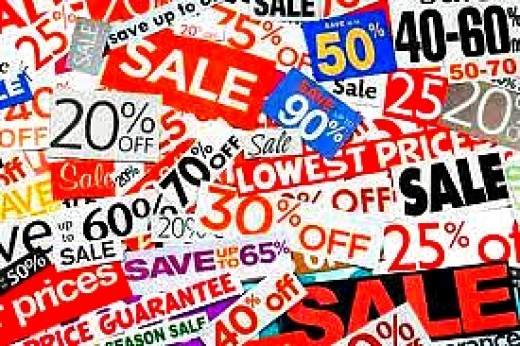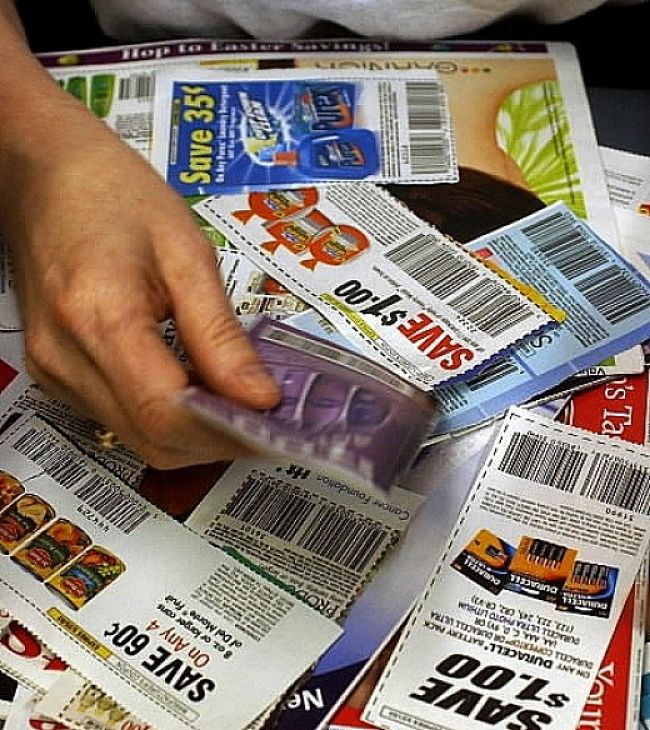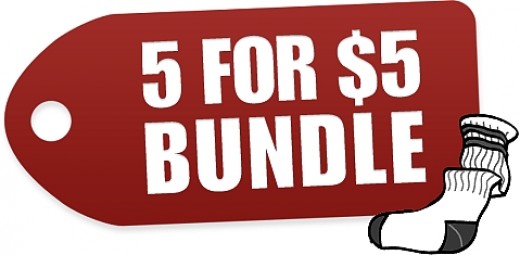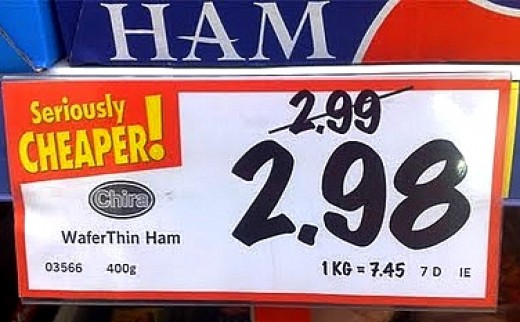Q&A: Generic Brands, Home Brand and Private Label Food Products
In these tough times everyone wants to get the best deal when buying groceries. But the grocery sellers have well developed strategies to extract the maximum amount of money from you for the goods you buy and to maximize their profits.
Their bargains and specials are not designed to do you a favour, but to get you to spend big time in their stores. Shoppers need to be aware of these strategies and all the tricks so that they can avoid the pitfalls and get the real bargains and low prices that are on offer. This includes being smart about generic brands.
Shoppers and Bargain hunters need to get a lot smarter. Part of this means understanding the grocery seller's tactics. It also means finding out how to spot a good bargain and ensure you always get best value for money. There are some excellent new iPhone apps, website and other tools you can use.






How do you find which store has the lowest prices and best deal?
In Australia, the government tried to set up a website that would list grocery item prices for each locality. It failed because the sellers would not provide the instantaneous information. It tried to do the same thing with fuel, but that failed for the same reason. However there are a number of websites and smartphone apps which attempt to do the same thing, but face the same problem of getting the information. One approach is to encourage the shoppers to supply the information and to gradually build up a database of prices.
Some grocery stores list their prices on websites, but it is hard to keep up to date with local information. A new iPhone app called Grocery Chatter aims to do this. It works by scanning barcodes and comparing prices. A user scans the barcode of a product on the shelves and the app compares compare this price across various stores in your locality as well as online stores. You can then see which grocer is offering the best price for than item. The app also has other consumer information about the store a product.
The weakness of course, is getting the data and it will rely shoppers entering prices to supplement the online data. You can check price trends and histories, and then add individual items to various shopping list tools such as Grocery Gadget, another app by the same company. It is well worth the effort to check what information and tools are available for comparing grocery items in your area. Consumer reviews are also worthwhile.
How to avoid wasting your money on items you don't really need?
Make a grocery list, including the various smartphone apps - check it twice and stick to it. Some of the apps available include: OurGroceries, SplashShopper, ShopShop, Grocery Gadget, Grocery IQ, Shopping List, Shopper, GroceryList, GreenGrocer. There are many online lists such as Grocery List Manager.
A little planning can ensure you minimize the number of trips you have to make for those last minute items. The more visits you make the higher the risk that you will be suckered into expensive impulse buys - the bargain you cannot pass by. Another tactic is to set a dollar limit on the amount you want to spend. List the most essential items first and the luxury items last. If there is a bargain on offer use the budget limit as a way of deciding whether it is worth it. You can only buy something else by dropping one of the items already on the list. There are many fabulous website and apps for shopping lists that allow you to do this.
One of the best ways of avoiding impulse buys is to order and buy groceries online. If you avoid wandering through the store, you will avoid the temptation of the 'bargains'.
Choose the pathway through the store carefully. Selecting a less direct route will mean you can avoid the bargain bins and the temptation they offer.
How to avoid being ripped of by scanner errors?
Many shoppers are unaware that price scan errors are common in the grocery stores, including bargain prices not being updated. and can cost you additional dollars. Research has shown that about 6% of shoppers were overcharged at the grocery checkout. Many grocery stores are required to make the item free if you can show that the scanned price is wrong, but it's up to you to find and report the error.
How to avoid being ripped of by Generic Items?
Generic Items offer savings of 10% to 50% compared with brand-name items. But the grocery sellers are not necessarily doing you a favour. They love you to buy generic items. Why? because they make higher profits on them - that is why they push them so hard. They force the supplier to offer a generic item lock them into a contract and then squeeze the supplier by paying less and less. The supplier does not have to maintain a brand reputation and so quality is downgraded. Many generic items are simply rubbish and are not value for money. Shopper need to be very careful to read the labels and test the goods before committing to them. Check the unit prices carefully. The unit price is the price for one "measure" of the item. For example it may be the price per ounce price per gram or litre or the price per pound of the item. Many stores will have the unit price labels on the shelf just below the item. Make careful comparisons. Read the ingredients list and watch out for deceptive packaging and use-by-dates. Remember that many generic items may have inferior quality and my not be good value.
Other tips:
- Check that the item is real value for money. If you have a coupon for a brand name item, and if your store doubles coupons, you will frequently come out ahead if you purchase the brand name item.
- Compare ingredients and read the food label, especially the sodium content as some generic foods have added salt to make them taste better.Also check the fat content. for other reasons Generic brands may have weird ingredients or inappropriate substitutes.
- Check the weight content of the generic and the brand name food and the unit price (cost per unit of measure. Some brand name cereals for example have bigger boxes but may contain less food by weight. The same may apply to the generic item.
- The generic item may be much larger than the brand name one and you need to be careful that you are not buying too much especially for perishable items.
- Shelf life and use by dates need to be checked as the generic item could not last as long and lead to wastage.
How Important are Unit Prices and How to Use them?
The unit price is the net price for one "measure" of the item, be it weight or volume. For example, it may be the price per pound or the price per ounce. Many stores display the unit price on the price labels shown on the shelves. Make careful comparisons. You will sometimes find that the larger package will have the best price per unit. Sometimes the smaller package will be found to have the best price per unit of masure. If the larger size has the best price, then buy the largest size if you can, store and use it before it goes to waste. Be aware of downsizing. A trend in recent years is for manufacturers to keep the same sized packaging and same product price, but reduce the quantity of product inside the package. This trend has been most commonly seen in paper products, baby food, coffee and cleaning products. Bigger is not always better. Often the units of measure will be different for comparable goods and this make the comparison difficult.The grocery seller may do this deliberately.
One thing to be aware of is that for meat the unit price includes the quantity of fat or bone on the item (i.e. things you don't eat). If two portions of meat have the same price per kilogram say, but one includes a lot of fat or a huge bone in it, the price per edible amount of meat is actually higher.
What are the best ways to use coupons and similar loyalty offers such as fuel discounts?
Make sure you look carefully at the grocery coupons you're clipping before cheering about the great deal being offered. Many coupons offer deals for low quality, highly packaged foods that are low in nutrition and may have many strange ingredients. Many people claim to able to reduce their grocery bill by 50% or more. The majority of coupons are for products that you are not interested in or need. So how do you find coupons for items that you want and really need?
The best way is to go to the source such as using the supply company's website and signing up for their newsletter that will include coupons and deals.
Many people don’t bother with coupons or fuel offers believing that 30-50 cent coupon is not work changing where you shop. But there are many occasions where you can get real bargains. Save the coupons until the product is offered at a discounted price so that you can get a double discount.Many seller also offer double coupon deals. Store coupons for essential items until the time you need them, But check the expiry dates. The coupons for non-food items such as toothpaste are probably the most valuable as you can store them for later use and you will not tend to excess use.
What are the best way to buy bulk foods - Unprocessed foods are much cheaper?
Why are you buying canned beans and other processed goods when you could be buying much cheaper unprocessed ingredients? Buying dried beans in bulk and soaking them overnight before cooking them is a great eat substitute and they taste a lot better and have less salt. There are lots of other examples.
How to Avoid the Traps and Cons of Bulk Buys and Multiple Item Discounts?
Be wary of the trick that stocking up on jumbo-sized quantities or 'value' multi-packs is frugal and that you will 'save'. The discounts may be tiny and not worth spending more than you would normally spend on that item. The 5 items for $5 and 1-0 items for $10 may be traps that trick you into buying and consuming excess. Think about why the companies are offering these discounts. They are out to make a bigger profit, to clear excess stock, to encourage upsizing, excess and waste on you part and to change you habits to buy that item and more of it. The smart shopper will be aware of these tactics and will think carefully to get the real bargains.
Some of the issues to consider are:
- If you can get the discount for the actual number of items at the discounted price
- Watch out for good that are close to their use by dates
- Most of the items are for snack foods that the shop wants you to buy and consume excess amounts of and come back for more. You will end up spending more on that item than you otherwise would.
- Focus on goods that you normally buy and don't be trapped into buying what you really don't want or need.
- Focus on long-lived items that you can store and use as needed, such as rice or toothpaste. These are items that you do need but which you will not consume more quickly.
- Check that the discounts are worthwhile and not just 3-5 cents per item. Also check the unit price and that the item is a quality product and genuine discount below its normal price. There may be a better value product on the shelves.
How to Check that the Price Cuts are Genuine and How to Spot Bogus Bargains?
Many grocery sellers use a trick called 'price establishing' where they sell the item at an inflated price for very short period of time so as to offer the product at a 'discounted price' which is in fact the normal price for the goods. Check the price at other sellers to confirm that the price is a genuine discount. It pays to learn about the prices at your grocery store and to know the normal prices. Many of the discounts are for goods close to the expiry dates or are low price junk goods that may be sold at a higher than normal price - but offered as discounts.
Research has shown that many goods offered as discounts for 6 months or more may have been offered at their 'normal' price for tree of four weeks. Many of the so-called 'specials' are in fact normal prices.
Beware of the Grocery 'Shrink Ray'
This expression refers to the many grocery items that shrink in size, but grow in price. There are many sneaky tricks such as reducing the number of biscuits (cookies) in a packet from 20 to 18, but keeping the same package, or a new one that is the same size but contains less. Packages of nappies have been reduced from 104 to 96 per pack and chocolate sizes from 200g to 160g, simply by reducing the thickness of the chocolate block. It is a very sneaky and deceptive retailing trick that is widely used.
Look at the Bottom Shelves - This is where many of the genuine bargains can be found
The better-value items will often be the lower shelves, especially when you check the unit price. Top shelves and eye-level shelf space are premier locations that are fought over by the various brand items. The grocery store will often put the high price branded items on these shelves to maximize their profits. Sometimes the brand-name companies will pay for the privilege, a practice which is known as 'slotting'. Often the cheaper alternatives will be on the bottom selves or in the less popular aisles in the shop. Research has shown that you can reduce your grocery bill by looking down. On the lower shelves will be the discounted items with lower margins for the store and many of the bulk discount items.Th savings vary but some bottom-shelf equivalents have prices that are up to 50 percent less than those on the top shelves.
Are the Subscription, Clubs, Cooperative and Wholesale Outlets Worthwhile?
American bulk retailer Costco and other consumers’ union stores and similar warehouse retailers offer a new path to discounted prices. Usually shoppers will need to buy a subscription for an annual membership card. If you can qualify to join a genuine wholesale outlet you will get access to very low prices. There are many cooperatives that buy goods in bulk to get discount prices.
The disadvantage of these options is that they only offer bulk goods and the pack size may be too large for many shoppers and the net cost of the pack to high despite the lower cost per unit.
The answer is to form your own group or cooperative amongst your family and friends to share the cost and slit up the large bulk packs.